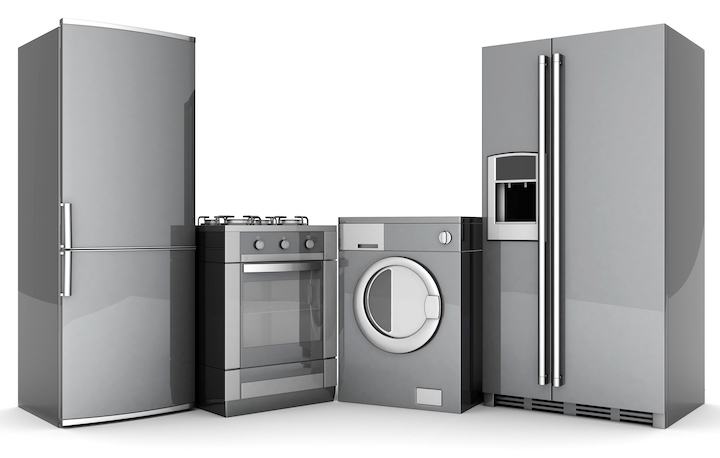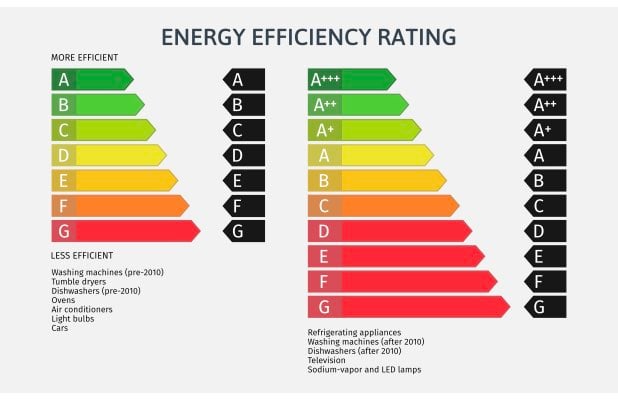
Household appliances: an overview to navigate the field
In recent years, there has been a productive redesign of the household appliance sector with the design and marketing of equipment that is increasingly high-performing in terms of consumption, increasingly safe and efficient in terms of the environment and sustainability, and increasingly minimal and innovative in design.
What are the development trends in the design of new appliances? What types of components should you consider to make your appliance distinctive?
In this article, we provide an overview of some of the characteristic aspects of the home appliance sector to discover SLIM's range of home appliance components.
More specifically, we will talk about:
- Household appliances: trends in the home appliance market
- Household appliances of the future: the new energy label
- Regulations and directives for household appliances
- Household appliance components
- SLIM's solutions for household appliance components
What are the trends in large and small household appliances for 2022?
Click on the button below and discover the infographic dedicated to home appliance trends.
Household appliances: trends in the home appliance market
Today, the design of new household appliances is dominated by the search for ever higher-performance, energy-saving appliances with a view to having more efficient and high-performance appliances. Development trends for new home appliances refer to the concepts of sustainability, energy saving, recycling, use of simple control systems and interfaces and efficient technologies for storage, refrigeration, cooking and washing.
These themes give rise to revolutionary technological systems, which are cleverly enclosed within appliances with a strong aesthetic impact and innovative design.
In this sense, to meet the demand for multi-functionality in new homes, even household appliances are becoming transversal and versatile: the kitchen table incorporates and conceals the induction hob and the oven becomes one with the hood and hob.
Specifically, the cooker hood sector is evolving in two main directions: on the one hand, appliances are being offered that integrate extraction systems to ensure healthy environments, and on the other hand, systems that contain and reduce household appliance noise.
At FTK EuroCucina 2022/Milan various versions of multifunctional and beautifully designed kitchen household appliances were presented.
Household appliances of the future: the new energy label
Sustainability is a major theme in the research and development of new domestic appliances. In recent years, technological research has been supporting the design of household appliances that are more energy efficient, more recyclable in the choice of raw materials and environmentally friendly in the use of cleaning agents. These objectives partly converge in the new energy classification intended for household appliances. In March 2021, the new energy labelling, which was established by the European Framework Regulation 2017/1369, came into force. It aims to make energy classes more readily understandable and was necessary when increasingly high-performance household appliances had over-numbered the higher classes (A+, A++ e A+++) while the remaining categories had been empty for some time. In this new configuration, all classes including the "+" symbol in the previous label have disappeared in favour of a common, simpler scale (A to G).
The technology introduced in the new generation of household appliances, currently on the market with the new energy label, is not only advantageous from a performance point of view but also allows substantial energy savings. Analysing consumption, for example, a new class A washing machine, refrigerator or dishwasher consumes around 60% less than an appliance more than 10 years old.

In addition to energy savings, there is a growing awareness among manufacturers with regard to raw materials and recyclability, always with a view to reducing the impact on the environment. The household appliance industry is responsible for consuming a substantial amount of raw materials, energy and resources that impact each stage of the appliance's life cycle. In order to progressively reduce the impact of production processes, industry players are focusing on the circular economy, a production model based on the principles of reduce, repair, refurbish, recycle and resell. Pursuing such a model means striving for the extension of the product life cycle, reducing waste and CO2 emissions.
Regulations and directives for household appliances
Regulations governing the production and use of household appliances evolve rapidly to keep up with the times and respond to specific needs expressed by the market for shared references. In the regulatory environment, what rules must manufacturers of household appliances follow? Among the reference standards for manufacturers in the sector are the CEI standards that provide the main guidelines to be followed in the construction of domestic appliances. These standards are a unique tool, valid both nationally and internationally: they allow the quality and non-compliance of household appliances to be assessed, highlighting potential safety risks for users.
Household appliance components
Regardless of technological innovation, every household appliance is a tool composed of a set of assembled technical components: each element has a specific function and the objective of facilitating the use of the appliance in everyday life. Italy boasts a strong tradition in the field of electromechanical components for household appliances, with centres of manufacturing excellence that focus on the development of increasingly sustainable solutions, even in the smallest component. These include SLIM S.r.l., an Italian company specialising in the production of light indicators and electromechanical switches since 1973. What are the main components for large and small household appliances? Let's look at them together.
Switches for household appliances
The bipolar switch is an electrical device that is mainly used to interrupt the electrical circuit of domestic appliances with critical loads. Washing machines, dishwashers, refrigerators and ovens are devices that require a high current load. In order to make maintenance work safer and provide greater protection for appliances and users, an on-off switch can be provided to interrupt the flow of current when necessary.
LEDs and indicator lights for household appliances
Among the standard lighting components for household appliances, we also find indicator lights: small light units with the specific function of signalling the operating status of the appliance or illuminating surfaces. As part of the evolution of household appliance components, we have switched from the neon or incandescent lamp to the LED light source, which provides a high-efficiency and better luminosity type of signalling. You can select the light indicator of your interest from the SLIM configurator: you can customise the features and performance of the light source, body and connection.
SLIM's solutions for household appliance components
Alongside a structured offer of standard and modular lighting solutions, SLIM offers customised lighting systems for household appliances: these are innovative lighting devices manufactured according to customer requirements. In the household appliance sector, customised lighting solutions range from light profiles with SMD LEDs to backlit fibre optic profiles, even with an RGB source.
Are you looking for a specific lighting solution for large or small household appliances? Find out how we can help you in the development of lighting components: Click on the button below and feel free to contact us!

